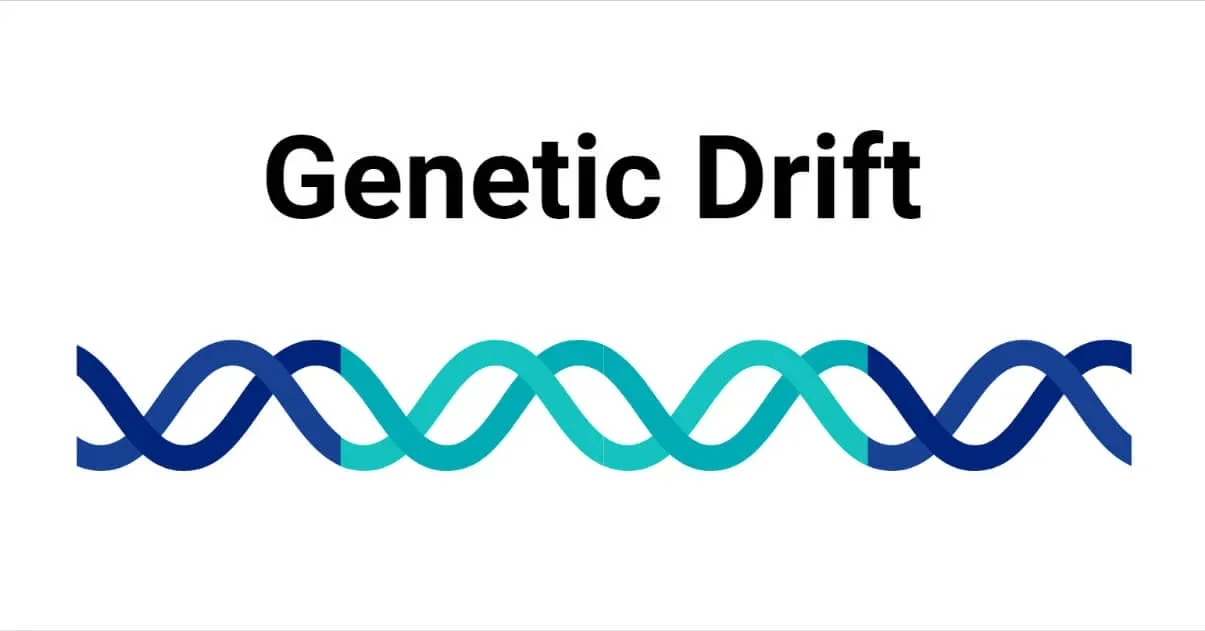Table of Contents
Introduction
Genetic drift, a fundamental concept in evolutionary biology, plays a pivotal role in shaping the genetic landscape of populations over time. In this detailed guide, we delve into the intricacies of genetic drift, shedding light on its definition, mechanisms, and real-world implications.
The Forces Behind Genetic Drift
Understanding Genetic Drift. It refers to the random changes in allele frequencies within a population over generations. Unlike natural selection, it is driven by chance rather than selective advantage, making it a powerful force in evolutionary dynamics.
Mechanisms at Play Two primary mechanisms drive genetic drift: the bottleneck effect and the founder effect. The bottleneck effect occurs when a population undergoes a sharp reduction in numbers, leading to a loss of genetic diversity. The founder effect, on the other hand, occurs when a small group establishes a new population, carrying only a subset of the original gene pool.
Exploring Real-world Examples
The Bottleneck Effect: Cheetahs in Peril Cheetahs, a species facing endangerment, exemplify the bottleneck effect. A historical reduction in their population led to a limited gene pool, increasing susceptibility to diseases and reducing adaptability.
The Founder Effect: Amish Population Dynamics The Amish community in the United States serves as a notable example of the founder effect. The establishment of this community by a small group resulted in a unique genetic composition, influencing inherited traits and susceptibility to certain conditions.
Genetic Drift in Small vs. Large Populations
Small Populations and Drift Intensity: In smaller populations, it exerts a more pronounced impact. With fewer individuals contributing to the next generation’s gene pool, chance events can significantly alter allele frequencies.
Large Populations and Drift Stability: Conversely, larger populations experience more stable genetic drift. The sheer number of individuals buffers against drastic changes, maintaining a broader range of genetic diversity over time.
The Role of Genetic Drift in Evolutionary Processes
Divergence and Convergence: It contributes to both divergence and convergence in evolutionary processes. While small populations may develop distinct genetic traits, large populations may converge toward a more stable genetic composition.
Adaptive Evolution vs. Neutral Evolution: In the context of evolution, it interacts with natural selection. While natural selection favors adaptive traits, It can lead to the fixation or loss of neutral traits, influencing the evolutionary trajectory.
Genetic Drift in Human Evolution
Historical Events and Allele Frequencies: Human evolution bears the imprints of genetic drift. Historical events, such as migrations and population bottlenecks, have influenced allele frequencies in different populations, contributing to the genetic diversity observed today.
Medical Implications: Understanding it is crucial in the medical field. Certain genetic disorders may be more prevalent in specific populations due to historical genetic drift events, influencing healthcare strategies and genetic counseling.
Addressing Common Misconceptions
Genetic Drift vs. Natural Selection: It’s essential to distinguish it from natural selection. While both shape genetic diversity, genetic drift operates through chance, while natural selection is driven by advantageous traits.
Long-term vs. Short-term Effects: It can have profound long-term effects on small populations but may exhibit limited impact in the short term for larger populations. Acknowledging these timescales is crucial for a nuanced understanding.
Genetic Drift: FAQs
How fast does it occur? It operates over generations, and the speed varies based on population size. Smaller populations experience more rapid changes.
Can genetic drift lead to new species? While It contributes to microevolutionary changes, the emergence of new species is a complex process involving various factors.
Is it always detrimental? It can lead to both advantageous and detrimental outcomes. Its impact depends on the specific context and population size.
Do humans experience ongoing it? Yes, humans continue to undergo genetic drift influenced by factors like migrations, demographic events, and isolation.
Can it be reversed? Reversing It is challenging, especially in small populations. Conservation efforts often focus on maintaining genetic diversity to counter its effects.
How does it affect biodiversity? It can reduce biodiversity in small populations but may have a more limited impact in larger, more diverse
Conclusion
It, a force of chance in the evolutionary theater, intricately weaves itself into the genetic narratives of populations. From the bottlenecks faced by endangered species to the unique genetic compositions of isolated communities, It shapes the very fabric of life. This guide has aimed to demystify the complexities surrounding it, offering a comprehensive understanding of its mechanisms, real-world examples, and implications in human evolution.
You can also refer to below additional resource here.
For Information on Ingenuity Mars Helicopter, please refer here.

1 thought on “Does Genetic Drift Hold the Pinnacle to Evolutionary Progress?”